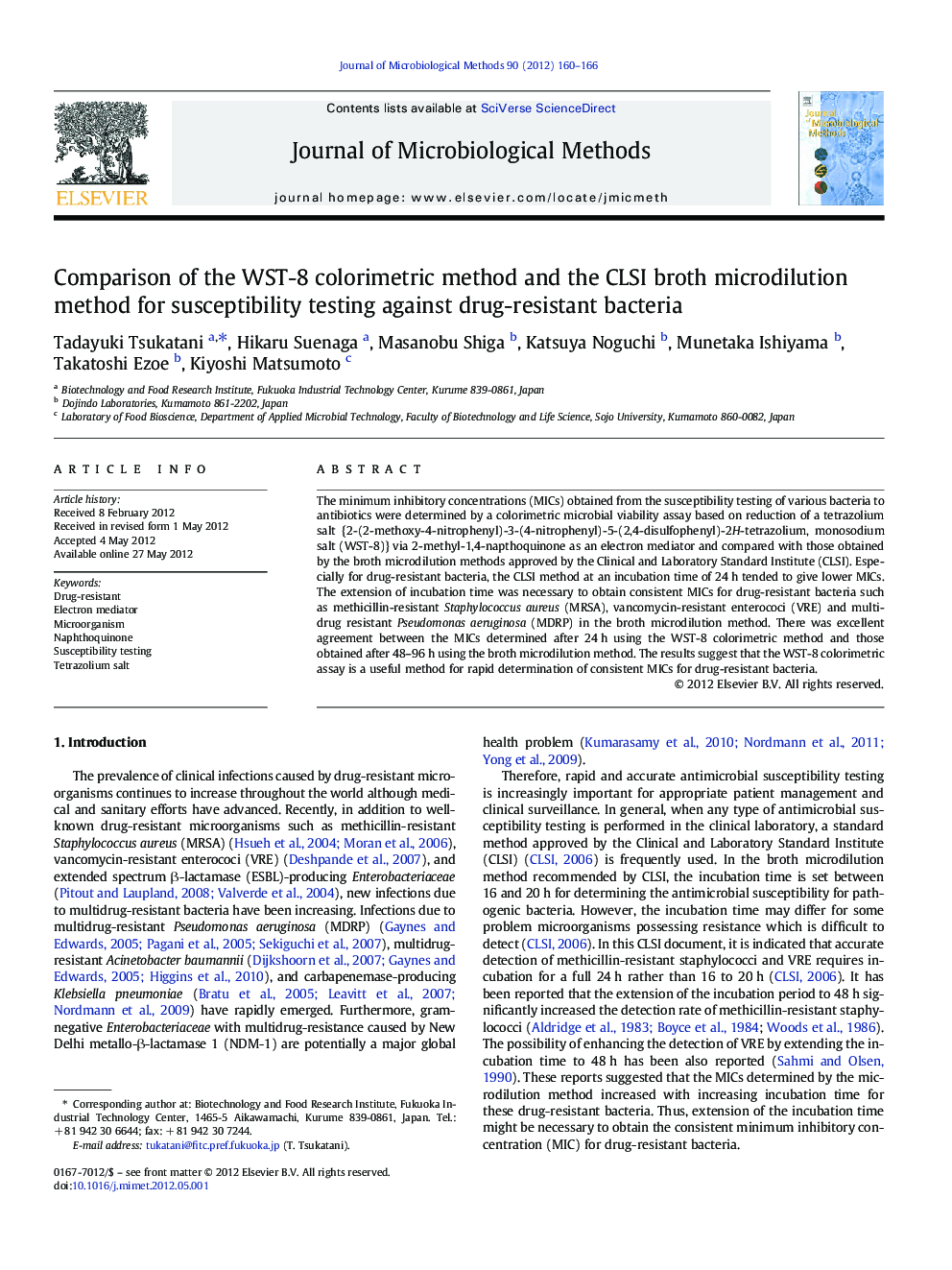| Article ID | Journal | Published Year | Pages | File Type |
|---|---|---|---|---|
| 2090193 | Journal of Microbiological Methods | 2012 | 7 Pages |
The minimum inhibitory concentrations (MICs) obtained from the susceptibility testing of various bacteria to antibiotics were determined by a colorimetric microbial viability assay based on reduction of a tetrazolium salt {2-(2-methoxy-4-nitrophenyl)-3-(4-nitrophenyl)-5-(2,4-disulfophenyl)-2H-tetrazolium, monosodium salt (WST-8)} via 2-methyl-1,4-napthoquinone as an electron mediator and compared with those obtained by the broth microdilution methods approved by the Clinical and Laboratory Standard Institute (CLSI). Especially for drug-resistant bacteria, the CLSI method at an incubation time of 24 h tended to give lower MICs. The extension of incubation time was necessary to obtain consistent MICs for drug-resistant bacteria such as methicillin-resistant Staphylococcus aureus (MRSA), vancomycin-resistant enterococi (VRE) and multi-drug resistant Pseudomonas aeruginosa (MDRP) in the broth microdilution method. There was excellent agreement between the MICs determined after 24 h using the WST-8 colorimetric method and those obtained after 48–96 h using the broth microdilution method. The results suggest that the WST-8 colorimetric assay is a useful method for rapid determination of consistent MICs for drug-resistant bacteria.
► A rapid determination method of consistent MIC for drug-resistant bacteria is developed. ► The proposed method is based on a colorimetric microbial viability assay. ► A long time is required to obtain consistent MICs in the broth microdilution method. ► There is excellent agreement between the MICs obtained with both methods.
